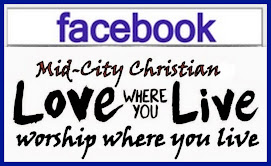Monday, August 27, 2012
Multi-site churches replacing mega-churches in North Park and the USA
By ENInews
27 Aug 2012
The number of US
congregations that host worship services at more than one physical location has
grown to more than 5,000 in the last decade, according to a new report - writes
a correspondent for ENI/RNS.
Researchers say these
"multisite" churches, which may share worshippers across town or many
miles apart, are growing at a much larger pace than traditional mega-churches.
Without the burden of
additional expensive buildings, congregations find they grow faster in new
places, said Warren
Bird, research director of Leadership Network, who announced his
conclusions last week.
“It’s a combination of evangelism
and saying, `People may not come to this particular building. How can we take
where we are to where they are?'” he told Religion News Service.
Bird, the author of books on
the multisite trend, has tracked the number of churches meeting in more than
one place for his Dallas-based church think tank; he combined his findings with
Faith Communities Today surveys.
Multisite churches have grown
from fewer than 200 in 2001 to 1,500 in 2006 to an estimated 3,000 in 2009 to
more than 5,000 today. In comparison, US megachurches have grown from about 50
in 1970 to about 1,650 in 2012 in North America.
Multisite comes in all kinds
of models: Some congregations speak different languages at different locations;
some hear from different “campus pastors” onsite and others are preached to by
a senior pastor who speaks live or via video.
“The more campuses you have,
the more likely you are to use video teaching,” said Bird.
Sergio De La Mora, senior
pastor of Cornerstone
Church of San Diego, preaches five times every Sunday on its main campus in
National City, California – with one service in Spanish and another translated
into Japanese. After morning services, he hops in his car and drives to the La
Jolla campus for a 5pm service before returning to National City for its last
service at 6.30pm.
Meanwhile, videos of his
8.30am sermon are played in satellite campuses in Escondido, California, and
across the board in Tijuana and Mexico City. A campus pastor runs the service
at a location in Tucson, Arizona.
So, is one of the
disadvantages of multiple sites an exhausted pastor?
“You got to remember we’re
born to do this,” said De La Mora, comparing his leadership of his “franchised”
church to an Apple store manager who works from opening until 10 p.m. “This is
the new generation of preachers. People are in transit so they want options
when they come to church.”
In all, his nondenominational
evangelical church is attended by about 6,500 people.
“Our philosophy is I do the
speaking but my campus pastor, with his leaders, they do the reaching into the
community,’’ De La Mora said.
At Community Christian
Church in the Chicago area, Pastor Dave Ferguson has taken a different
approach with its dozen sites.
“I can only be at one
location at a time,” he said.
Each week he gathers in a
room with a team of campus pastors to develop a “big idea” into a sermon. A
video featuring one of them is created, but the pastors can choose whether to
speak from the original manuscript, a version of it they edited or show the
video.
In the end, the general
message reaches about 10,000 people worshipping at sites that include a
community center, a college theatre, reopened churches and office parks.
While the vast majority of
multisite churches are on the other side of town or at least in the same
region, there are exceptions. The Bridge Community Church, a congregation based
in rural Indiana, has campuses in Anderson, Decatur and Muncie but also has one
in Bihar, India.
Bird said churches that total
at least 500 people tend to be the ones that start a second campus, but smaller
churches have also created additional sites.
“It was the megachurches that
pioneered it and because megachurches tend to be ones people glean ideas from,
pretty soon churches said, `Why couldn’t we do that? You don’t have to be
really big to do that,’” Bird said.
[With
acknowledgements to ENInews. ENInews, formerly
Ecumenical News International, is jointly sponsored by the World Council of
Churches, the Lutheran World Federation, the World Communion of Reformed
Churches, and the Conference of European Churches.]
Subscribe to:
Post Comments (Atom)
























No comments:
Post a Comment